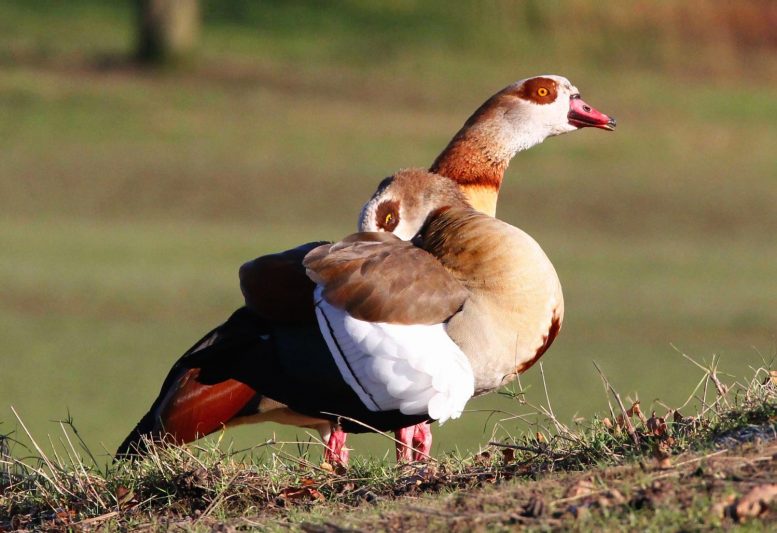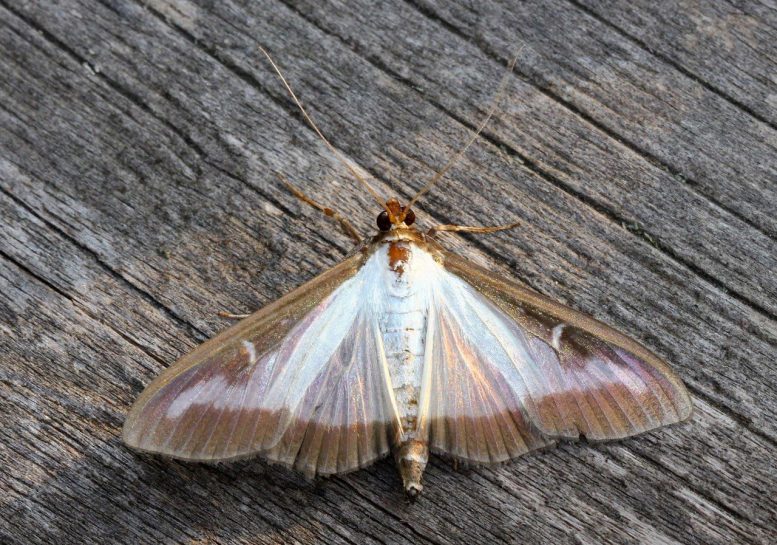
The number of alien (non-native) species, particularly insects, arthropods, and birds, is expected to increase globally by 36% by the middle of this century, compared to 2005, finds new research by an international team involving UCL.
Published in Global Change Biology, the study also predicts the arrival of around 2,500 new alien species in Europe, which translates to an increase of 64% for the continent over the 45-year period.
The research team led by the German Senckenberg Biodiversity and Climate Research Centre hope it should be possible to reduce this number with stricter biosecurity regulations.
Alien species are those that humans have moved around the world to places where they do not naturally occur. More than 35,000 such species had been recorded by 2005 (the date of the most recent comprehensive global catalog). Some of these aliens can go on to become invasive, with damaging impacts to ecosystems and economies. Alien species are one of the main drivers of extinction of animals and plants.
Co-author Professor Tim Blackburn (UCL Centre for Biodiversity & Environment Research and the Institute of Zoology, ZSL) said: “Our study predicts that alien species will continue to be added to ecosystems at high rates through the next few decades, which is concerning as this could contribute to harmful biodiversity change and extinction.
“But we are not helpless bystanders: with a concerted global effort to combat this, it should be possible to slow down or reverse this trend.”

For the study, the research team developed a mathematical model to calculate for the first time how many more aliens would be expected by 2050, based on estimated sizes of source pools (the species that could end up becoming invasive) and dynamics of historical invasions, under a ‘business-as-usual’ scenario that assumes a continuation of current trends.
The model predicts a 36% increase in the number of alien plant and animal species worldwide by 2050, compared to 2005 levels.
The study identifies high levels of variation between regions. The largest increase is expected in Europe, where the number of alien species will increase by 64% by the middle of the century. Additional alien hotspots are predicted to include temperate latitudes of Asia, North America, and South America. The lowest relative increase in alien species is expected in Australia.
Europe will also see the largest increase in absolute numbers of alien species, with around 2,500 new aliens predicted.
Lead author Dr Hanno Seebens (Senckenberg Biodiversity and Climate Research Centre, Germany) said: “These will primarily include rather inconspicuous new arrivals such as insects, mollusks, and crustaceans. In contrast, there will be very few new alien mammal species such as the well-known raccoon.”
Co-author Dr Franz Essl (University of Vienna) added: “Increases are expected to be particularly large for insects and other arthropods, such as arachnids and crustaceans. We predict the number of aliens from these groups to increase in every region of the world by the middle of the century – by almost 120% in the temperate latitudes of Asia.”
The study also predicts that the rate of arrival of alien species will continue to increase, at least in some animal groups. Globally, by 2050, alien arthropods and bird species in particular will arrive faster than before, compared to the period 1960 – 2005. In Europe, the rate of new alien arrivals is expected to increase for all plant and animal groups except mammals.
Neither a reversal nor even a slowdown in the spread of alien species is in sight, as global trade and transport are expected to increase in the coming decades, allowing many species to infiltrate new habitats as stowaways.
Dr Seebens said: “We will not be able to entirely prevent the introduction of alien species, as this would mean severe restrictions in international trade.
“However, stricter regulations and their rigorous enforcement could greatly slow the flow of new species. The benefits of such measures have been shown in some parts of the world. Regulations are still comparatively lax in Europe, and so there is great potential here for new measures to curtail the arrival of new aliens.”
Reference: “Projecting the continental accumulation of alien species through to 2050” by Hanno Seebens, Sven Bacher, Tim M. Blackburn, César Capinha, Wayne Dawson, Stefan Dullinger, Piero Genovesi, Philip E. Hulme, Mark van Kleunen, Ingolf Kühn, Jonathan M. Jeschke, Bernd Lenzner, Andrew M. Liebhold, Zarah Pattison, Jan Pergl, Petr Pyšek, Marten Winter and Franz Essl, 1 October 2020, Global Change Biology.
DOI: 10.1111/gcb.15333
2 Comments
But, we’ve been told that we are on the verge of a 6th massive extinction event! Which is it? Contraction or expansion? Maybe just re-distribution? It seems that any change is viewed as a crisis.
In the USA folks are posting on the web about receiving random seed packets from China. They have been instructed not to plant them because the contents are invasive seeds. Seems we have a silent Bio- attack currently happening.